- Publications

Projects Hobart Travel Model: land use forecasts and scenarios
Tasmanian Department of State Growth
Hobart, Tasmania
Employment , Housing , Transport
- Land use forecasts
- Employment forecasts
- Housing forecasts
- Population forecasts
- Demographic forecasts
Employment, housing and population land use projections help identify key infrastructure and public transport upgrades needed across Greater Hobart.
In 2020, SGS prepared small area employment and population land use projections for Greater Hobart as key inputs into the Greater Hobart Urban Travel Demand Model (GHUTDM). The projections included a range of demographic and economic variables for the base year of 2019 and forecast periods of 2030, 2040, and 2050. The scenarios modelled represented a base or ‘policy evolution’ situation which reflected the most likely urban future based on current data, trends, and expected policy/structural changes.
Following on from this work in 2021, the team updated these forecasts with three additional land use scenarios – a business as usual scenario, a MetroPlan scenario, and a decentralised city scenario. Considering the integration of land use and transport, these scenarios were designed to test the limits of plausible development pathways, allowing for the broader impacts on the transport system and development patterns to be better understood. Comparing these three scenarios allowed the respective merits of each scenario to be compared to determine the traffic impacts of each and conclude what infrastructure and public transport upgrades were needed across Greater Hobart.
Our project team
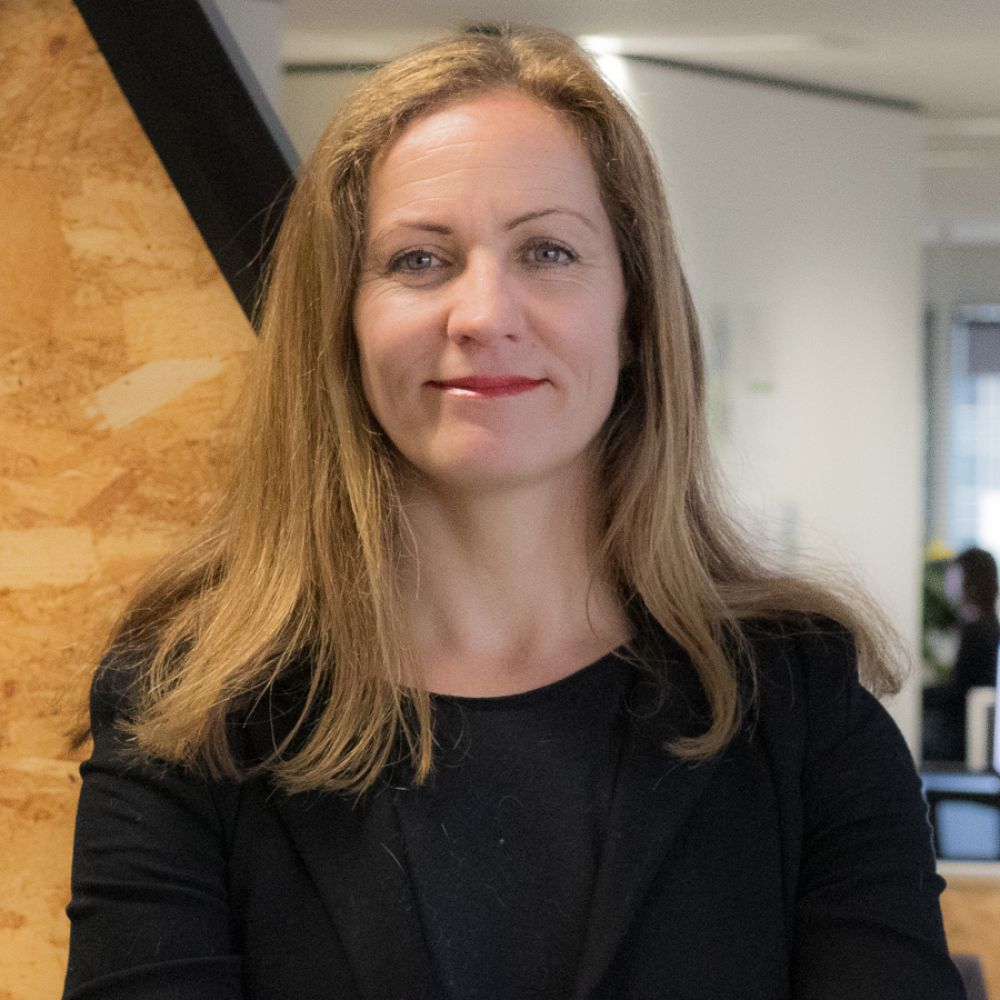
Principal & Partner

National Leader for Data & Spatial Analysis | Principal & Partner I Executive Director

Associate & Partner

Senior Associate & Partner

Explore related projects.

Get in touch
Work with us on projects that matter..
SGS Economics and Planning acknowledge the First Nations Peoples of Australia and on whose Country we live and work. We acknowledge that the Aboriginal and Torres Strait Islander peoples of Australia never ceded their sovereignty, and are one of the oldest continuing living cultures on Earth, have one of the oldest continuing land tenure systems in the world, and have one of the oldest continuing land use planning and management systems in the world.
- View Record

TRID the TRIS and ITRD database
Review of current passenger transport system and land use patterns across Greater Hobart
The purpose of this study is to review passenger travel demand measure for Greater Hobart's passenger transport system and outline potential measures to improve passenger transport outcomes and reduce greenhouse gas emissions associated with the passenger transport task.
- Record URL: http://www.dier.tas.gov.au/passengertransportframework/hobart_passenger_transport_case_study
Tasmania. Department of Infrastructure, Energy and Resources
Parsons Brinckerhoff
- Publication Date: 2009-4
- Pagination: 98p
- Issue Number: Stage 1
Subject/Index Terms
- TRT Terms: Air quality management ; Passenger transportation ; Public transit ; Transportation planning ; Travel demand ; Urban transportation
- Uncontrolled Terms: Planning and Environment
- Geographic Terms: Hobart, Tasmania
- ATRI Terms: Emissions control ; Passenger transport ; Public transport ; Transport planning ; Travel demand ; Urban transport
- Subject Areas: Environment; Passenger Transportation; Planning and Forecasting; Public Transportation;
Filing Info
- Accession Number: 01381974
- Record Type: Publication
- Source Agency: ARRB
- Files: ATRI
- Created Date: Aug 22 2012 12:56PM
Greater Hobart plan predicts 60,000 more people by 2050, with no expansion to urban growth boundary
Hobart's four urban councils believe there is enough land available for 30,000 more dwellings in 30 years within existing city boundaries to house 60,000 more people, but developers are far from convinced.
The councils of Hobart, Glenorchy, Clarence and Kingborough have approved the 30-year Greater Hobart Plan that predicts a rapid increase in townhouses, villas, apartment buildings up to eight storeys high and granny flats.
They would be built on infill land — areas that are either vacant or under-utilised, like subdividing small residential blocks, or adding housing above businesses.
But the plan has a few assumptions:
- First, Greater Hobart has added about 700 dwellings per year over the past 10 years — this would need to increase to 1,000, and requires a reversal of trends that see the vast majority of new housing close to the city's fringe
- Second, the city would need to increase its 50:50 split between infill and greenfield development — undeveloped land with no structures — to a 70:30 proportion. But developers claim this target is already being missed by some margin
- Third, the plan assumes planning laws would allow this scale of increase to occur and it would be accepted by local communities
- And fourth, the plan says Hobart does not need substantial changes to its road and car parking infrastructure, that more people will be living closer to their commute destination, and there'll be an increase in the use of public transport, cycling and walking
When it comes to health and education, that was seen as a matter for the state and federal governments.
No city border expansion?
The plan does not see a need for Hobart's urban growth boundary to be expanded — and Lord Mayor Anna Reynolds agrees.
She said the four council areas already had "a lot of land" that could be better utilised for housing, and the city should avoid urban sprawl at all costs.
"The current urban growth boundary that was set some years ago provides plenty of room for these projected increases in population, but it does require us to open a few small new areas of greenfield development," Cr Reynolds said.
"That includes places like Droughty Point on the eastern shore."
While the Hobart Showground was seen as essential for adding housing, the relocation of the University of Tasmania campus from Sandy Bay was not included.
Cr Reynolds said the "mid-town area" — a collection of blocks surrounding the CBD — would be a key focus for a rapid increase in medium-density housing, along with suburbs like Lenah Valley and New Town.
"It does assume that we will see more compact development, so people will live closer to what they need to get to, and we're not necessarily presuming that there'll be a massive increase in vehicles to come with this," she said.
But the decision not to expand the urban growth boundary caused concern among developers.
JAC Group managing director Dean Cocker believed the councils should not rule out allowing more greenfield development beyond the boundaries, including a proposal for a Whitewater Park subdivision on Kingston's western fringe.
He said this was just one example of land beyond the boundary that could be considered.
Without these kinds of developments, Mr Cocker doubted the housing target could be achieved.
"I can say with confidence that the 70 per cent infill target will not be achieved and still deliver the total number of homes required. It just won't happen," Mr Cocker said.
'Give locals the quality of life they deserve'
The increasing focus on "active transport" (non-motorised), a "compact" Hobart and developing medium-density housing along the northern suburbs transit corridor — a long-debated strip of disused land alongside a former passenger rail line — was supported by the Australian Institute of Architects.
Tasmanian chapter president Stuart Tanner said they supported the ambition to increase infill and not expand the urban growth boundary.
"We need quality development to maintain and enhance the natural and built environment that makes our city so special and attractive to visitors, while giving locals the quality of life they deserve," he said.
"This requires a sensible, united approach with effective strategies, sound research and the expertise of local industry specialists."
While the plan does not highlight specific changes to planning laws that could be needed to scale up infill and medium-density development, state development minister Guy Barnett said changes could be needed.
An implementation plan still needs to be developed by the four councils, relying on the support of the state government, which will release its own 20-year housing strategy next year.
Mr Barnett said Tasmania "needs to do things differently" when it comes to housing.
"Obviously there may need to be changes in terms of planning and zoning and that's a matter for local government. We'll be working together to get the job done and ensure we create a liveable environment that is sustainable," he said.
"We'll maintain all the good things we love about Hobart, but we also make sure there are sustainable living arrangements into the future."
Others are calling for Tasmania's residential standards to be improved before a rapid increase in housing occurs.
Planning Matters Alliance Tasmania state coordinator Sophie Underwood said the standards did not allow for the consideration of an area's existing values, developments did not need to use or add natural assets, neighbours can be overshadowed and north-facing roofs – which maximise energy efficiency – are not required.
"We are concerned that we're having this growth that will potentially impact values without having the best planning standards. There's an opportunity now for those to be improved," she said.
In Tasmania, neighbours are not informed of a development next door on all occasions unless it exceeds 8.5 metres in height or there's the potential for overlooking, it has insufficient car parking, is within a boundary setback or has certain other discretionary uses.
- X (formerly Twitter)
Related Stories
This single mum lives in an expensive sea-view suburb and pays less rent than ever before.
Peter spends $170 a fortnight on public transport. The city he lives in might surprise you
All you need to know about Hobart's new passenger ferry service
Cindy would love to swap her 'gas guzzler' but second-hand cars have gone up 50 per cent
At 53, Tracey now has to live in her car because of a $90 rent hike
Why one of Hobart's most experienced Uber drivers thinks it's time for a congestion tax
This man is not a hacker but his computer can make or break your day
- Bridgewater
- Community and Society
- Derwent Park
- Geilston Bay
- Lenah Valley
- Lindisfarne
- Local Government
- Mount Stuart
- Population and Demographics
- Risdon Vale
- State and Territory Government
- Tolmans Hill
- Urban Development and Planning
You are using an outdated browser. Please upgrade your browser to improve your experience.
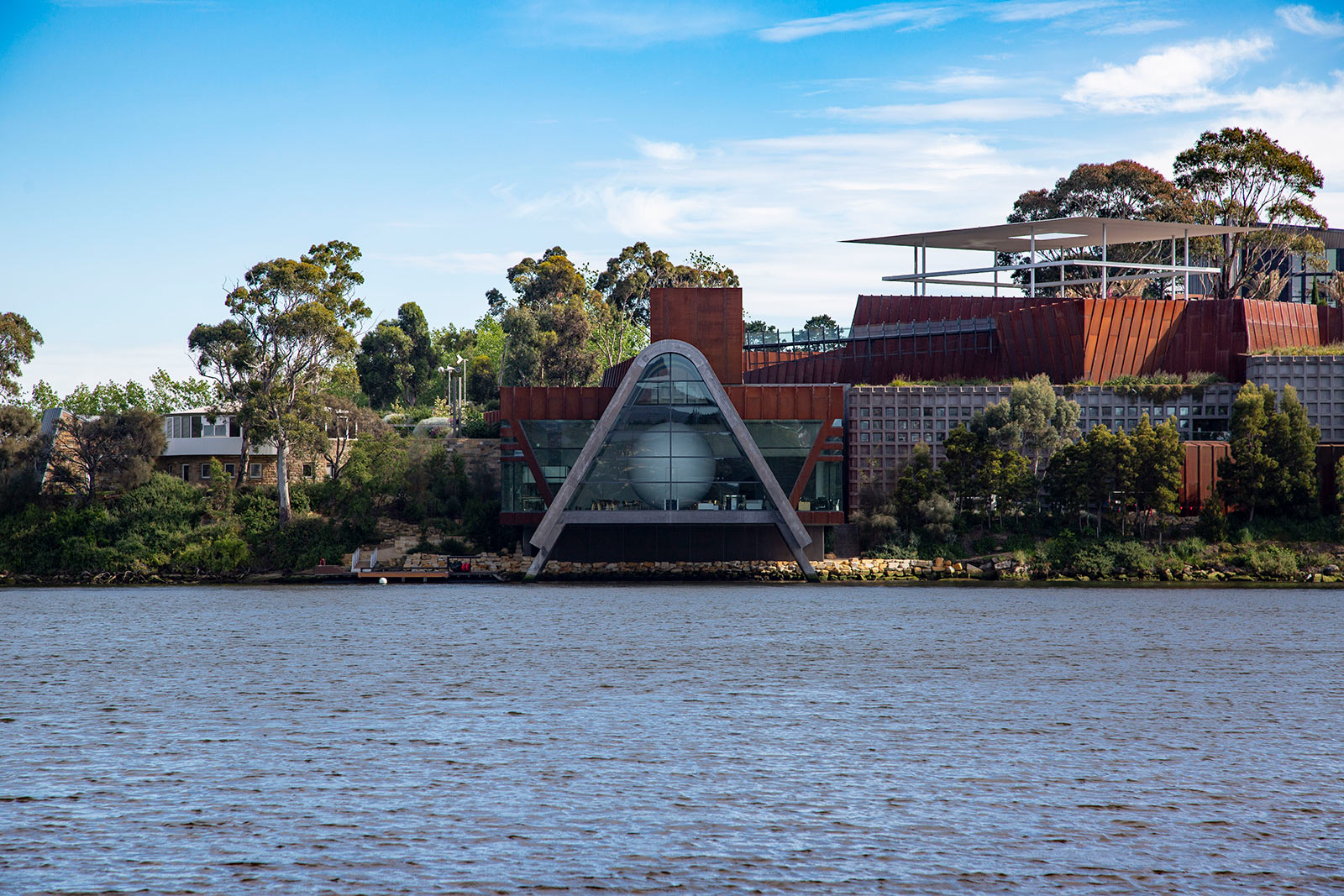
- Greater Hobart Committee
30-Year Greater Hobart Plan

Brochure.pdf
PDF File, 1.3 MB

30-Year Greater Hobart Plan.pdf
PDF File, 1.6 MB

Strategy for Growth and Change.pdf
PDF File, 4.2 MB

Greater Hobart Plan - Implementation arrangements.PDF
PDF File, 945.4 KB
The Greater Hobart Committee has developed a 30-Year Greater Hobart Plan.
Our city is growing and changing, and the Greater Hobart Plan will guide this growth to help us retain the Greater Hobart we know and love.
The Greater Hobart Plan is a whole-of-city guide to assist the development of transport, housing and employment centres and how they relate to each other in the long term.
The Greater Hobart Plan is accompanied by a detailed Strategy for Growth and Change to provide the background for the direction indicated within the Plan, and both are available for download.
The Committee has also developed implementation arrangements including actions, monitoring and evaluation arrangements and stakeholder engagement arrangements to help deliver on the Greater Hobart Plan.
The drop down boxes below also provide a summary of the Greater Hobart Plan.
Greater Hobart snapshot
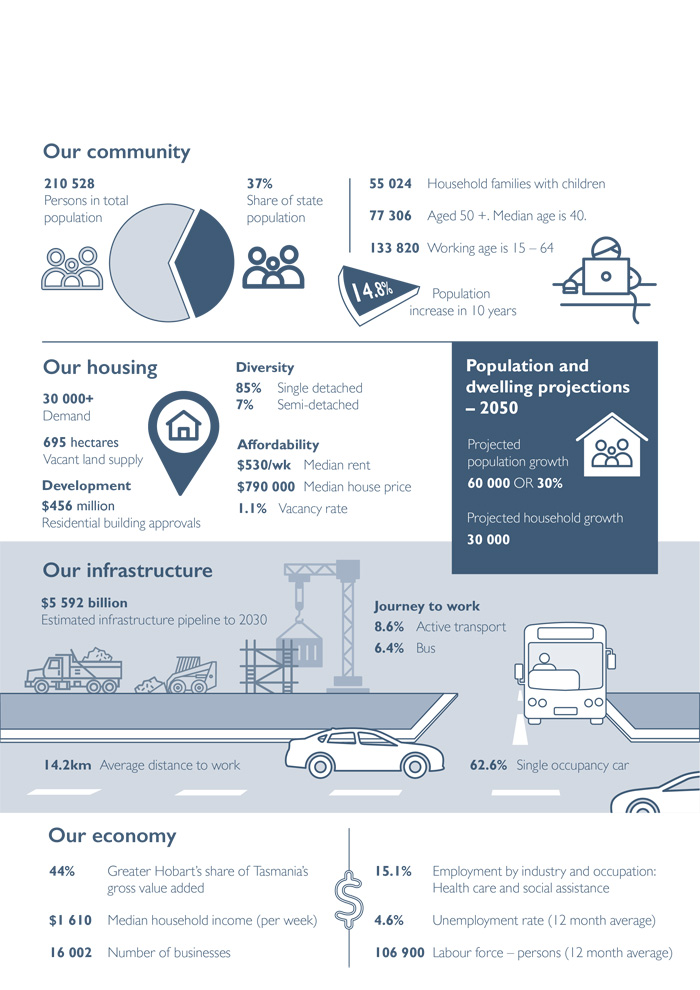
Introduction
The Greater Hobart Plan has been prepared under the Greater Hobart Act 2019 , at the request of the Greater Hobart Committee.
This Plan is the first time that transport, housing and precinct planning have been brought together in a spatially integrated manner. This will allow us to plan for business and employment growth, recreation and environmental management, protect farmland and plan for climate change. In the short term, the Plan will be used to inform an update to the Southern Tasmania Regional Land Use Strategy (STRLUS).
The Greater Hobart Plan is aligned with, and is designed to deliver, the 2050 Vision for Greater Hobart (the Vision):
We will live in the world’s best small capital city, a city built for people that is connected, friendly and safe.
Greater Hobart is a thriving and inspiring place to live, where we all work together to make a positive contribution to our extraordinary environment.
The vision is underpinned by the following themes
- Be greater for our people – a great place to live; safe and welcoming; better active transport; and contribute to health and wellbeing
- Have greater interconnection, but distinct communities – continue to 'feel like Hobart’; connected to unique natural environment; thriving, unique neighbourhoods; and people centred, activated places
- Have greater resilience – build resilience and disaster preparedness; strong local business community; adapt towards a low carbon economy; and community spirit to 'future-proof' the city
- Be well planned – 'right place, right time’; collaborative approach to planning; and coordinated provision of infrastructure and services
- Have greater connection – easy to get around; greater transport choice; increase co-location of jobs and housing; and smart technology to enhance useability
- Plan for growth and change – greater housing choice; increase residential density in inner areas; growth will be planned and sequenced; and protect unique natural areas and biodiversity
The Greater Hobart Plan is supported by a Strategy for Growth and Change and an Implementation Plan, to make sure we have a clear pathway to deliver the outcomes set out within the Plan. These documents will continue to evolve as the city changes, and in response to new information. The Greater Hobart Plan will also establish processes for the Government, Greater Hobart councils, industry and the community to work together to ensure that our capital city grows and develops in a sustainable way.
Addressing challenges
Greater Hobart is experiencing change and the 2050 Vision for Greater Hobart (the Vision) has identified challenges to be faced over coming years.
These include an ageing population, managing our growth in a sequenced and strategic manner, having a small regional economy that provides fewer employment opportunities than other mainland capitals, limited diversity in housing options, transport and infrastructure constraints, and local responses to bushfire, climate change and the COVID-19 pandemic.
Other wider challenges like rapid technological advances, dynamic international trade corridors and demands, and the changing nature of migration are all having profound impacts globally.
These various challenges must be considered when preparing a long-term plan for Greater Hobart.
It will require collective and collaborative leadership to address these challenges, seize opportunities, and strengthen Greater Hobart’s resilience to change. The Greater Hobart Committee aspires to support Greater Hobart to become “the world’s best small capital city”.
The Greater Hobart Plan provides clear direction on how to best respond to current and emerging challenges.
This will require access to land and opportunities for quality development, to support traditional industries and expanding sectors of the economy. Greater diversity in housing is required to provide greater choice for individuals to suit different lifestyles and different stages of life, including supporting older people to age-in-place by providing opportunities to downsize their home yet remain within their neighbourhood to maintain connections to friends and family. Housing also needs to be well-located so that people can have good access to local jobs, services and transport connections.
Greater Hobart’s history of outward growth and development outside of the city, mixed with a growing and ageing population, is contributing to some growing pains, such as congestion on our roads. More people are living further away from where they work, shop and play. This outward spread increases the pressure for major road infrastructure improvements, which can add to cost-of-living pressures. A focus on providing our community with more housing options can help reduce these pressures.
Prioritising and facilitating targeted infill development in preference to greenfield expansion will see the emergence of more inner-city housing through medium density development. In delivering this, the Greater Hobart Committee is committed to maintaining local character and protecting heritage values. To implement this Greater Hobart Plan we will need design solutions to protect what people love about our capital city and its natural and built environment. Our challenge will be to encourage development to cater for current and future growth, in ways that enhance our city’s liveability and attractiveness.
Planning for the future
The Greater Hobart Plan seeks to guide growth over the next 30 years, in order to shape our city’s future urban form. Our analysis is based on evidence including historical growth rates, expectations of future development and sound planning principles.
While projected growth may not eventuate within the timeframes considered, having a plan will ensure we are well prepared for future growth. It will also ensure that, regardless of the level of growth in the next 30 years, we will have a plan to make Hobart a safe, friendly, connected, inspiring and thriving place to live and work.
We anticipate that Greater Hobart will continue to experience population growth. Based on growth over recent years we will assume an additional 60 000 people over the next 30 years. We will also assume that each additional dwelling can accommodate an average of two people, which means that we expect to need around 30 000 new homes to be constructed during this period.
By setting these assumptions, strategic planners across the public and private sectors can prepare for growth and infrastructure upgrades in advance, and target efficiencies and productivity gains as a result.
Analysis has helped us identify locations across Greater Hobart where new residential development can be located. We have been aware of some of these locations for some time given their size and significance, but in general we see potential for increased urban renewal initiatives and more medium density development across many of our suburbs.
The purpose of urban renewal and the provision of additional housing is to ensure that residents have better access to transport options to aid movement around the city. This will require strategic long-term consideration and planning.
Importantly an Implementation Plan will be prepared to identify and progress measures to encourage the right type of development in the right places. Our analysis also confirms that the future planned growth of our city can be primarily accommodated within the current Urban Growth Boundary currently described in the Southern Tasmania Regional Land Use Strategy (STRLUS), and is best placed within densification areas along main transit corridors to better utilise our current infrastructure. In addition, we will develop a coordinated and strategic approach to growth that may result in changes to the Urban Growth Boundary to accommodate future urban development.
This Greater Hobart Plan provides a clear narrative about the future of our city, one that should foster integrated planning, encourage public and private investment, and build more coordinated and collaborative relationships. Employment and business growth will be important to provide opportunities for more residents to work near where they live.
The Greater Hobart Plan will help inform an update to the Southern Tasmania Regional Land Use Strategy (STRLUS), and the Implementation Plan will enable a coordinated approach across governments to achieve the aims and objectives of the Greater Hobart Plan.
A compact city
Greater Hobart is shaped by its geography, flanking the Derwent River. Our natural environment is one of the most attractive characteristics of our city and defines it in the eyes of most people. In shaping the city’s urban form, this natural setting is both a constraint and opportunity for development.
Our analysis indicates that at this point in time there is sufficient land within the Urban Growth Boundary to accommodate an expected additional 30 000 dwellings over the next 30 years. However, this conclusion is based on the theoretical yield of available land. The Greater Hobart Plan proposes that additional housing will be primarily delivered through urban consolidation and infill development rather than greenfield development at the urban fringe. The Greater Hobart Plan proposes a 70:30 infill/greenfield development split (21 000 infill and 9 000 greenfield dwellings) as an attainable target over the next 30 years, which is consistent with the development split achieved over the last decade. However, the Greater Hobart Plan will seek to encourage more infill development closer to transport corridors and within identified densification areas.
Infill development is proposed to be primarily low-impact medium density residential dwellings, while allowing for higher density dwellings in appropriate locations. This means encouraging more contemporary terrace and townhouse dwellings within, and surrounding, the main business districts and along corridors with high frequency public transport services.
There are advantages to infill residential development over greenfield development. Some of which are:
- Reduced infrastructure and service provision costs for infill development.
- Shorter travel distances to employment, shops, schools, health services.
- Better access to more frequent public transport services.
- Increased residential densities can enhance economic viability of existing business zones and generate more local employment.
- A compact urban footprint has a reduced environmental impact including lower greenhouse gas emissions.
- More efficient use of underutilised land – an opportunity to improve local amenity, while still protecting heritage and character.
- Increased opportunities for social interaction, relationship building, community connections, personal security and ‘living locally’.
Although the Greater Hobart Plan will encourage more infill residential development, we also need new greenfield development to meet our expected housing demand and provide choice for our community. Importantly, the proposed 9 000 new greenfield dwellings over the next 30 years will require a faster rate of delivery than in the past.
Where and how to grow
To deliver our focus on infill development we will require concerted effort and collaboration between governments and industry if future development is to be directed into identified areas with capacity to absorb expected growth. Our analysis of land supply data has identified the following opportunities for future residential development over the next 30 years:
- Low density greenfield housing on existing residentially zoned land – 9 450 additional dwellings.
- within existing inner suburban areas across Greater Hobart – 12 380 additional dwellings.
- within existing business zoned land close to primary and principal business districts – 9 000 additional dwellings.
- on rezoned land to enable residential use (e.g. Hobart Showgrounds) – 3 700 additional dwellings.
- Higher density infill housing in appropriate locations.
This analysis indicates that the total available land supply within the current Greater Hobart Urban Growth Boundary could potentially cater for over 34 000 additional dwellings, which is more than our anticipated demand of 30 000 dwellings by 2050. It will be important to ensure that existing land supply is used efficiently and to encourage infill development and employment and business growth close to the main activity centres and along main transit corridors. In addition, we will strategically identify areas appropriate for consideration as future growth. Changes to the Urban Growth Boundary may result based on evidence of need and the application of technical planning analysis.
The main areas identified for infill and greenfield development including future growth areas within each council are:
- Clarence – primarily infill, with some greenfield, including in already identified future growth areas such as Droughty Point peninsula.
- Glenorchy – primarily infill, especially in the catchment areas along the transit corridor, and greenfield at Granton and Austins Ferry
- Hobart – primarily infill within the CBD
- Kingborough – primarily infill in and around the Kingston CBD, greenfield at Huntingfield, and a mix of infill and greenfield in already identified future growth areas at Margate and Snug
Future commercial and industrial development is likely to occur within the existing zoned areas, much of which has the capacity to accommodate more intensive activity. More mixed‑use developments will also be encouraged (mix of commercial and residential). Living closer to workplaces and shops will encourage healthy active transport and create a more vibrant and sustainable city.
Infrastructure to support growth
The high-level objective of the Greater Hobart Plan is to better align land use and infrastructure planning. To deliver this, land use and infrastructure strategies need to work together to support common objectives, and sequence development to support the right development in the right places. The coordinated delivery of infrastructure and associated services can help unlock both future housing supply and commercial opportunities across our city.
In the preparation of this Greater Hobart Plan, there has been close liaison with key infrastructure providers including State Roads, TasWater, TasNetworks and NBN providers. Coordinated forward planning will be critical to ensure medium and long-term forecasting aligns with proposed future land use and development changes. A focus on prioritising infill development will support the more efficient use of existing infrastructure and provides more opportunities for our transport system (road, parking, public and active transport) to improve public safety and reduce traffic congestion.
Work to deliver on a Greater Hobart Transport Vision is underway through the Hobart City Deal, and the Tasmanian Government and Greater Hobart Councils continue to collaborate closely with the Australian Government to deliver on that Vision. Significant policy decisions will be required as our cities grow, to support an uplift in public and active transport services, balance parking demand with the amenity of local activity hubs, improve the efficient transport of freight and to embrace emerging technology. This includes the adoption and use of electric vehicles and e-scooters.
We will also need to carefully plan for growth to ensure we can continue to provide both public infrastructure and green open spaces to enhance liveability, appeal and encourage community connectedness. This also extends to long term planning across all areas of responsibility. For example, the provision of health and education services as populations increase in targeted areas, and the provision of waste collection services that reflect changing attitudes towards greater recycling of waste and a reduced environmental impact.
Protect and promote what is valuable
Greater Hobart’s existing character, natural assets, built heritage and relaxed lifestyle, are part of what people love about our city. These valuable attributes are some of Greater Hobart’s most important competitive strengths. Future urban development within and around Greater Hobart should be managed to protect these aspects.
If Greater Hobart is to be “the world’s best small capital city ”, we will need to protect what already makes it special, as well as innovate to provide the services and amenity expected by our city’s residents and visitors. The Greater Hobart Plan provides a pathway to create a city that balances the retention of Greater Hobart’s natural and homegrown attributes with being a leader in collaborative governance, applying new technology, successfully adapting to a changing climate and generating new job opportunities with a more dynamic and entrepreneurial focus.
As a small city, Greater Hobart has opportunities to focus on the creation of healthy neighbourhoods to support residents of all ages and backgrounds. The ability to move easily within and through our city is also highly valued, so further growth needs to improve personal mobility and discourage isolation and other inequitable outcomes.
Greater Hobart has a striking natural setting dominated by the Derwent River, with many local foreshores and bushland reserves. The public open spaces within and surrounding the city are well-protected and are less likely to be impacted if future urban growth is primarily consolidated within existing built-up areas. Infrastructure improvements will be required within those areas (shared pathways, playgrounds, streetscapes, pocket parks, playing fields etc) to support increased future use and demand.
Precinct structure planning and the development of urban design guidelines will encourage the type of urban renewal we want to see in identified growth areas, with the aim of improving local amenity and promoting diverse and quality housing development.
The focus of the Greater Hobart Plan is to encourage more medium density dwellings throughout our city, especially within identified growth and targeted infill areas along the main transit corridors and close to the main activity hubs.
The Greater Hobart Plan will establish a land use planning framework with the capacity to be responsive and relevant, and unique to the needs of Greater Hobart. It will enable the creation of liveable and vibrant communities, suburbs and spaces where people want to live, work, shop and socialise. The economic benefits of population growth will be spread across the whole city. A ‘live local’ ethos will be encouraged, where we can have employment options close to where we live, where we can send our children to school close to home, where we can easily visit a local park, where we can shop locally, and where other essential services are relatively close by.

Implementation
In the short term, the Greater Hobart Plan will inform an update to the Southern Tasmania Regional Land Use Strategy. The Greater Hobart Plan will be supported by an Implementation Plan that will set out agreed policy directions and actions, with responsibility for delivering these actions documented and tracked. Some committed actions may be easily incorporated within existing programs. However, it is likely that both the Tasmanian Government and the Greater Hobart Councils will need to consider new policy or investment decisions to support implementation of the Greater Hobart Plan.
It is anticipated that the implementation measures will cover a range of solutions and initiatives, with varying levels of complexity and will need to be delivered across the short, medium and long term. This will allow all parties to consider the sequencing and delivery of related actions. While it is likely that certain actions may take some time to achieve, identifying and tracking these actions overtime will provide a valuable starting point for collaboration and discussion. The actions to be identified within the Implementation Plan will include:
- continued collaboration between the Government and Greater Hobart Councils
- precinct structure planning of growth and densification areas to balance growth and amenity
- maintaining an Urban Growth Boundary that prioritises urban consolidation over urban sprawl, while developing an agreed approach to growth that may include changes to the Boundary based on evidence of need and technical planning analysis, as well as addressing any identified anomalies
- urban renewal through a focus on medium density residential development and higher density dwellings where appropriate within the existing urban footprint
- a coordinated transport plan that encourages increased public transport use and active transport
- provision of public infrastructure to facilitate desired future residential and/or commercial development, where appropriate
- continued delivery of affordable and social housing close to local jobs and services
- consideration of incentives to encourage development in identified growth and targeted infill areas
- clear public messaging of future development expectations throughout Greater Hobart and additional public engagement and partnership arrangements.
The successful implementation of this Greater Hobart Plan will result in:
- improved liveability and accessibility for our people
- protection of our city’s natural features, character and heritage
- improved community resilience in the face of natural hazards
- more social and affordable housing closer to city centres and along transit corridors
- much greater housing choice – both in terms of type and location
- more people able to live closer to where they work, shop and access services
- increased uptake of public transport and more active transport opportunities
- reducing travel distances/times and fuel costs
- more opportunities for social interaction in improved public spaces
- increased activation and economic viability of central and local business districts
- more mixed-use opportunities to encourage business investment
- a city that is highly valued for its amenity, attractions and lifestyle
- alignment with council precinct structure planning and the development of the Tasmanian Housing Strategy.
The Implementation Plan to be developed to accompany the Greater Hobart Plan will outline the processes required to achieve the measures and indicators above.
A coordinated planning framework will be required and will allow public and private investments to be sequenced and approved. This will provide the basis for long-term cooperation across government, industry and the community.
A well implemented Greater Hobart Plan will provide certainty and confidence for the Government, Greater Hobart Councils and business so that financial investment and jobs growth can be directed towards the most beneficial growth of our city. Greater community certainty should also create greater confidence in the long-term outcomes and less concern about potential adverse impacts.
The implementation of the Greater Hobart Plan will be designed to manage, adapt to and harness change for the social, economic and environmental benefit of the Greater Hobart community, now and into the future.
Review and reporting
This inaugural Greater Hobart Plan provides an overall framework for spatially managing the growth that is likely to occur within Greater Hobart. It begins a city-wide planning process that will evolve over time and require updated information, revision of past assumptions, and further analysis to continually build on our evidence base.
External factors including social, technological, economic and environmental trends will all have implications for Greater Hobart’s future development and will need to be monitored including access to services and facilities. There is much to be learnt from similar jurisdictions elsewhere and how they have responded to these issues. Implementing the Greater Hobart Plan will also be an iterative process that will require flexibility and a collective willingness to adapt.
The Greater Hobart Plan will be monitored against the listed actions and relevant key performance indicators (KPIs). This will enable adjustments to be made while also providing public transparency.
In addition to this, a review of the Greater Hobart Plan and its supporting documents will occur in four years, allowing it to evolve with emerging trends captured and explained.
Effective community engagement is a critical part of this ongoing review and reporting process. Public engagement and a good appreciation of community needs and desires will be encouraged to feed into the Greater Hobart Plan development. A well-informed community is essential for effective implementation of the Greater Hobart Plan via appropriate forums and other public communication opportunities.
Policy directions
The Greater Hobart Plan provides a list of policy directions under sixteen different headings to help responsible parties to focus their energies. Under the Implementation Plan, actions will seek to accomplish the policy directions, and each action will have responsible parties identified to deliver and implement the Greater Hobart Plan. The Implementation Plan will also provide an indication on the priority and sequencing of actions to help refine future work programs.
The current policy directions for the Greater Hobart Plan are listed below.
Hit enter to search or ESC to close
Travel Demand Management can help fast-growing cities beat congestion – and emissions
Friday 22 july 2022 1:30pm-3:00pm, knowledge exchange.
BACK TO THE PROGRAM
Australia has fast-growing cities – with brutal traffic congestion. Fixing congestion has meant record-breaking infrastructure spends, with mixed results.
This session will look at how Travel Demand Management programs, in NSW and Tasmania offered a more effective answer – and cut carbon emissions.
Session Outline
- Session Moderator - Derrick Hitchins, Chief Technical Principal - Transport Planning and Advisory | SMEC Australia
- David Surplice, Senior Manager, Travel Demand Management | Transport for NSW
- Dustin Moore, Network Planner | Department of State Growth, Tasmania AND
- Samantha Chapman, Transport Engineer | GHD - Keeping Hobart moving
- Alice Woodruff, Director | Active City - Zero emissions local trips: behaviour change as important as infrastructure?
Derrick Hitchins - Chief Technical Principal - Transport Planning and Advisory | SMEC Australia

Derrick Hitchins
Chief Technical Principal - Transport Planning and Advisory | SMEC Australia
Derrick is a senior transport infrastructure executive with over 35 years of experience in the civil and transportation sectors in Australia, New Zealand, South Africa and the United Kingdom. He has significant experience as a Project Director in the early planning phase of mainly road and rail projects in South East Queensland over the past 15 years. Derrick prides himself in bringing the required level of stewardship to the projects he is responsible for based on his extensive experience in dealing with complex project challenges and a variety of clients. Key to his many project successes is Derrick's ability to contribute actively towards the development of innovative design solutions and being able to quantify the benefits through meaningful discussion with clients and other project partners.
David Surplice, Senior Manager, Travel Demand Management | Transport for NSW

David Surplice
Senior Manager, Travel Demand Management | Transport for NSW
David Surplice is the Senior Manager, Travel Demand Management (TDM) leading a small but highly skilled Centre of Excellence that uses bespoke TDM methodologies to tackle a range of transport and related issues. David has 15 years experience in the public service spanning policy, project and program design and delivery and is recognised as a major thought leader in the field of TDM.
Travel Demand Management in NSW
David explains and answers questions about Transport for NSW approach to Travel Demand Management (TDM), outlines current projects and provides a look at activities, challenges, and opportunities for the year ahead. David also discusses how TDM principles such as remoding and retiming provide opportunities to manage congestion as well as the implicit and deliberate sustainability outcomes that TDM can achieve.
Dustin Moore - Network Planner | Department of State Growth, Tasmania

Dustin Moore
Network Planner | Department of State Growth, Tasmania
Dusty (Dustin) Moore is a Network Planner at the Department of State Growth (TAS). He has a strong interest in sustainable development and fostering approaches that promote better strategic planning. Dusty has experience in the consultancy, academic, NGO and government sectors in Australia and overseas, with Bachelor and Master degrees from the University of Tasmania. He is a planner with experience in research, strategic land use planning, systems thinking and sustainability at the local and state government level.
Dusty joined the Department of State Growth in 2019 to assist with the finalising and launching of improved bus networks in the north and north west of Tasmania. Dusty is currently part of a team investigating ways to keep Hobart moving into the future, with a focus on offering true transport choice and holistic, sustainable urban transport.
Keeping Hobart moving
Journeys to work in Greater Hobart are forecast to increase by 30% by 2040, which is unsustainable with current infrastructure and modal split. Expanding infrastructure is not the preferred option due to spatial constraints and climate impacts. Therefore, a bold travel demand management response is required. The presentation explores the visioning approach to providing transit infrastructure currently being trialled by the Department of State Growth (Tasmania) to change behaviours and create choice to ultimately address the mobility needs of a city with growing pains.
The Department has traditionally delivered infrastructure through a predict and provide model. Due to a lower population density and slower growth, projects have been able to be successfully delivered to address localised issues despite this being a reactive approach. As an attractive capital city, Hobart has entered a new phase of high growth. However, this has resulted in continued with urban sprawl, coupled with constrained road corridor environments, all in the context of the global climate crisis and emerging transport technologies. Therefore, it is clear a new approach is imminently required to reshape mobility in one of Australia's most car dependent capital cities.
Samantha Chapman - Transport Engineer | GHD
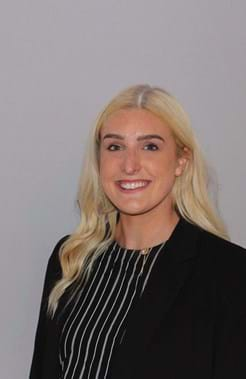
Samantha Chapman
Transport Engineer | GHD
Samantha Chapman, an innovative Transport Engineer and Project Manager (PM), joined GHD's Tasmanian business in 2016. She is an Engineer with experience in the management and options development for civil infrastructure projects within Tasmania. She completed Civil Engineering at University of Tasmania (UTAS) and undertook honours research in partnership with GHD and Department of State Growth on the Impact of Inner-City Parking on the Hobart Road Network using mesoscopic modelling. Her experience includes everything from assessment of major infrastructure projects through to highway corridor planning and funding applications, investment logic mapping, scenario modelling and feasibility and options analysis, as well as community and stakeholder engagement.
Samantha is currently part of a core team leading part of GHD's global Future Communities initiative, investigating the benefits of integrated multi-modal transport planning in unlocking urban opportunities. Samantha is passionate about taking a"whole-of-project" rather than focusing solely on business or technical components and believes most value can be seen by integrating tools such as traffic modelling within the greater project, connecting to broader transport planning and traffic engineering principles. Samantha worked with Dusty and the Department of State Growth team on the "Keeping Hobart Moving" project bringing her experience from delivering a range of unique projects within the transport and advisory spaces to Hobart's exciting opportunity in increasing mobility through sustainable transport solutions.
Alice Woodruff - Director | Active City

Alice Woodruff
Director | Active City
Alice Woodruff is Director of Active City, a practice that specialises in travel demand management and travel behaviour change strategies and interventions. Active City's approach is grounded in a commitment to support healthier, equitable and ecologically sustainable communities. Alice's work encourages people to walk, ride a bike (and other micromobilities) and use public transport for more of their travel; as part of a larger goal of transitioning to zero emissions transport systems.
Whether it's a major workplace, school, university, or an entire city, influencing people's travel choices towards low emissions and active travel is complex. Successful outcomes rely on melding expertise. Alice's work intersects transport planning, behavioural insights, community development and organisational change. Usually many of the answers lie in better infrastructure or transport services but much relies on behavioural responses and how to influence people's travel decisions.
With over 20 years experience in delivering strategic planning, policy advice and transport and environmental programs across state and federal government and consulting, Alice founded Active City in 2016.
Zero emissions local trips: behaviour change as important as infrastructure?
Changing our travel behaviours at an individual and organisational level are critical enablers to support significant mode shift towards active travel for local trips. Our transition to a zero-emissions transport system is complex and multi-faceted. At a local level, we can make significant gains by shifting the large portion of short vehicle trips to walking, bike riding and micromobilities. But our entrenched behaviours and social norms around driving for short trips add significant barriers that we must address alongside infrastructure gaps, traffic speeds and parking management.
Alice will explore the role that organisations (major trip destinations) contribute to our transition to a zero-emissions transport system. And how state and local governments need to work with major destinations to support this transition. Recent case studies including Frankston Hospital in Melbourne (5,000 employee workplace) and a TDM model for encouraging changes in employee travel to major Victorian health services will provide a topical case study.
Advertisement
A complex network perspective for characterizing urban travel demand patterns: graph theoretical analysis of large-scale origin–destination demand networks
- Published: 14 May 2016
- Volume 44 , pages 1383–1402, ( 2017 )
Cite this article

- Meead Saberi 1 ,
- Hani S. Mahmassani 2 ,
- Dirk Brockmann 3 &
- Amir Hosseini 1
3521 Accesses
70 Citations
4 Altmetric
Explore all metrics
Urban travel demand, consisting of thousands or millions of origin–destination trips, can be viewed as a large-scale weighted directed graph. The paper applies a complex network-motivated approach to understand and characterize urban travel demand patterns through analysis of statistical properties of origin–destination demand networks. We compare selected network characteristics of travel demand patterns in two cities, presenting a comparative network-theoretic analysis of Chicago and Melbourne. The proposed approach develops an interdisciplinary and quantitative framework to understand mobility characteristics in urban areas. The paper explores statistical properties of the complex weighted network of urban trips of the selected cities. We show that travel demand networks exhibit similar properties despite their differences in topography and urban structure. Results provide a quantitative characterization of the network structure of origin–destination demand in cities, suggesting that the underlying dynamical processes in travel demand networks are similar and evolved by the distribution of activities and interaction between places in cities.
This is a preview of subscription content, log in via an institution to check access.
Access this article
Price includes VAT (Russian Federation)
Instant access to the full article PDF.
Rent this article via DeepDyve
Institutional subscriptions
Similar content being viewed by others
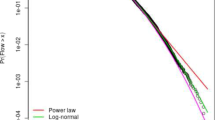
How do urban mobility (geo)graph’s topological properties fill a map?
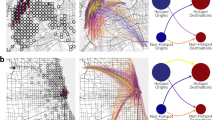
Revealing latent characteristics of mobility networks with coarse-graining
A complex network methodology for travel demand model evaluation and validation.
Axhausen, K., Garling, T.: Activity-based approaches to travel analysis: conceptual frameworks, models, and research problems. Transp. Rev. 12 (4), 323–341 (1992)
Article Google Scholar
Bazzani, A., Giorgini, B., Rambaldi, S., Gallotti, R., Giovannini, L.: Statistical laws in urban mobility from microscopic GPS data in the area of Florence. J. Stat. Mech. 2010 , P05001 (2010)
Betty, M.: The new science of cities. MIT press, Cambridge (2013)
Google Scholar
Bowman, J.L., Ben-Akiva, M.E.: Activity-based disaggregate travel demand model system with activity schedules. Transp. Res. A 35 , 1–28 (2001)
Brockmann, D.: Human mobility and spatial disease dynamics. Reviews of nonlinear dynamics and complexity, pp. 1–24. Wiley-VCH, Weinheim (2009)
Brockmann, D.: Statistical mechanics: the physics of where to go. Nat. Phys. News Views 6 , 720–721 (2010)
Brockmann, D., Helbing, D.: The hidden geometry of complex, network-driven contagion phenomena. Science 342 , 1337 (2013)
Brockmann, D., Hufnagel, L., Geisel, T.: The scaling laws of human travel. Nature 439 , 462–465 (2006)
Calabrese, F., Di Lorenzo, G., Liu, C.L., Ratti, C.: Estimating origin-destination flows using mobile phone location data. IEEE Pervasive Comput. 10 (4), 36–44 (2011)
Carrasco, J.A., Miller, E.J.: Exploring the propensity to perform social activities: a social network approach. Transportation 33 (5), 463–480 (2006)
Chen, Y., Frei, A., Mahmassani, H. S.: Exploring activity and destination choice behavior in social networking data. Proceedings of the transportation research board 94th annual meeting (No. 15-5808), Washington (2015)
Clauset, A., Shilazi, C.R., Newman, M.E.J.: Power-law distributions in empirical data. Soc. Ind. Appl. Math. Rev. 51 (4), 661–703 (2009)
Colak, S., Schneider, C.M., Wang, P., González, M.C.: On the role of spatial dynamics and topology on network flows. New J. Phys. 15 , 113037 (2013)
Çolak, S., Alexander, L.P., Alvim, B.G., Mehndiretta, S.R., González, M.C.: Analyzing cell phone location data for urban travel: current methods, limitations and opportunities. Trans. Res. Rec. 2526 , 126–135 (2015)
Costa, Da F., Baggio, L.R.: The web connections between tourism companies: structure and dynamics. Physica A 388 , 4286–4296 (2009)
Daganzo, C.: Urban gridlock: macroscopic modeling and mitigation approaches. Transp. Res. B 41 (1), 49–62 (2007)
Downs, R.M., Stea, D.: Image and environments. In: Downs, R.M., Stea, D. (eds.) Cognitive maps and spatial behavior: process and products. Aldine, London (1973)
Eagle, N., Pentland, A.S., Lazer, D.: Inferring friendship network structure by using mobile phone data. Proc. Nat. Acad. Sci. USA 106 (36), 15274–15278 (2009)
Faloutsos, M., Faloutsos, P., Faloutsos, C.: On power-law relationship of the internet topology. ACM SIGCOMM Comp. Commun. Rev. 29 , 251–262 (1999)
Fan, Y., Khattak, A.: Urban form, individual spatial footprints, and travel: examination of space-use behavior. Transp. Res. Rec. 2082 , 98–106 (2008)
Geroliminis, N., Daganzo, C.: Existence of urban-scale macroscopic fundamental diagrams: some experimental findings. Transp. Res. B 45 (3), 605–617 (2008)
Golledge, R.G., Stimson, R.J.: Spatial behavior: a geographic perspective. Guilford, New York (1997)
González, M.C., Hidalgo, C.A., Barabási, A.L.: Understanding individual human mobility patterns. Nature 453 , 779–782 (2008)
Gould, P., White, R.: Mental maps. Pernguin Books, Harmondsworth (1974)
Book Google Scholar
Hasan, S., Schneider, C.M., Ukkusuri, S.V., González, M.C.: Spatio-temporal patterns of urban human mobility. J. Stat. Phys. 151 , 304–318 (2013)
Iqbal, M.S., Choudhury, C.F., Wang, P., González, M.C.: Development of origin–destination matrices using mobile phone call data. Trans. Res. 40 , 63–74 (2014)
Jiang, B., Yin, J., Zhao, S.: Characterizing the human mobility pattern in a large street network. Phys. Rev. 80 , 1–11 (2009)
Joubert, J.W., Axhausen, K.: A complex network approach to understand commercial vehicle movement. Transportation 40 (3), 729–750 (2013)
Kamruzzaman, Md, Hine, J.: Analysis of rural activity spaces and transport disadvantage using a multi-method approach. Transp. Policy 19 (1), 105–120 (2012)
Kang, C., Ma, X., Tong, D., Liu, Y.: Intra-urban human mobility patterns: an urban morphology perspective. Physica A 391 , 1702–1717 (2012)
Keegan, B., Ahmed, M.A., Williams, D., Srivastava, J., Contractor, N.: Dark gold: statistical properties of clandestine networks in massively multiplayer online games. IEEE Second Int. Conf. Soc. Comput. (2010). doi: 10.1145/1925041.1925043
Kelley, R., Ideker, T.: Systematic interpretation of genetic interactions using protein networks. Nat. Biotechnol. 23 , 561–566 (2005)
Kim, J., Mahmassani, H.S.: Spatial and temporal characterization of travel patterns in a traffic network using vehicle trajectories. Trans. Res. C 59 , 375–390 (2015)
Liang, X., Zheng, X., Lv, W., Zhu, T., Xu, K.: The scaling of human mobility by taxis is exponential. Physica A 391 , 2135–2144 (2012)
Liang, X., Zhao, J., Dong, L., Xu, K.: Unraveling the origin of exponential law in intra-urban human mobility. Sci. Rep. 3 , 2983 (2013)
Lynch, K.: The image of the city. MIT Press, Cambridge (1960)
Mahmassani, H.: Dynamic network traffic assignment and simulation methodology for advanced system management applications. Net. Spat. Econ. 1 (3–44), 267–292 (2001)
Mahmassani, H., Saberi, M., Zockaie, A.: Urban network gridlock: theory, characteristics, and dynamics. Trans. Res. C 36 , 480–497 (2013)
Newman, M.E.J.: The structure of scientific collaboration networks. Proc. Nat. Acad. Sci. USA 98 (2), 404–409 (2001)
Newman, M.: Networks: an introduction. Oxford University Press, Oxford (2010)
Newman, M., Park, J.: Why social networks are different from other types of networks. Phys. Rev. E 68 (3), 036122 (2003)
Nguyen, T., Szymanski, B.: Using location-based social networks to validate human mobility and relationships models. Proc. IEEE/ACM Int. Conf. Adv. Soc. Netw. Anal. Min. (2012). doi: 10.1109/ASONAM.2012.210
Noulas, A., Scellato, S., Lambiotte, R., Pontil, M., Mascolo, C.: A tale of many cities: universal patterns in human urban mobility. Plos One 7 (5), e37027 (2012). doi: 10.1371/journal.pone.0037027
Pearson, D., Ellis, P., Farnsworth, S.: Calibration of a past year travel demand model for model evaluation. Texas Trans. Inst. (2002). doi: 10.1016/j.procs.2012.08.001 . (Report No. FHWA/TX-03/4198-2)
Pendalaya, R., Bhat, C.: Validation and assessment of activity-based travel demand model systems. Proc. Innov. Travel Demand Model. 2 , 157–158 (2006)
Peng, C., Jin, X., Wong, K.-C., Shi, M., Liò, P.: Collective human mobility pattern from taxi trips in urban area. Plos One 7 , e34487 (2012)
Rai, R.K., Balmer, M., Rieser, M., Vaze, V.S., Schönfelder, S., Axhausen, K.W.: Capturing human activity spaces: new geometries. Trans. Res. Rec. 2021 , 70–80 (2007)
Ratti, C., Frenchman, D., Pulselli, R.M., Williams, S.: Mobile landscapes: using location data from cell phones for urban analysis. Environ. Plan. 33 , 727–748 (2006)
Riccardo, G., Armando, B., Sanro, R.: Towards a statistical physics of human mobility. Int. J. Mod. Phys. C 23 (9), 1250061 (2012)
Roth, C., Kang, S.M., Batty, M., Barthélemy, M.: Structure of urban movements: polycentric activity and entangled hierarchical flows. Plos One 6 , e15923 (2011)
Rual, J.F., Venkatesan, K., Hao, T., Hirozane-Kishikawa, T., Dricot, A., Li, N., Berriz, G.F., Gibbons, F.D., Dreze, M., Ayivi-Guedehoussou, N., Klitgord, N., Simon, C., Boxem, M., Milstein, S., Rosenberg, J., Goldberg, D.S., Zhang, L.V., Wong, S.L., Franklin, G., Li, S., Albala, J.S., Lim, J., Fraughton, C., Llamosas, E., Cevik, S., Bex, C., Lamesch, P., Sikorski, R.S., Vandenhaute, J., Zoghbi, H.Y., Smolyar, A., Bosak, S., Sequerra, R., Doucette-Stamm, L., Cusick, M.E., Hill, D.E., Roth, F.P., Vidal, M.: Towards a proteome-scale map of the human protein–protein interaction network. Nature 437 (7062), 1173–1178 (2005)
Saberi, M., Mahmassani, H., Hou, T., Zockaie, A.: Estimating network fundamental diagram using three-dimensional vehicle trajectories: extending Edie’s definitions of traffic flow variables to networks. Transp. Res. Rec. 2422 , 12–20 (2014)
Schneider, C.M., Belik, V., Couronné, T., Smoreda, Z., González, M.C.: Unravelling daily human mobility motifs. J. R. Soc. Interface 10 , 1–8 (2013)
Schonfelder, A., Axhausen, K.W.: Activity spaces: measures of social exclusion? Transp. Policy 10 (4), 273–286 (2003)
Siganos, G., Faloutsos, M., Faloutsos, P., Faloutsos, C.: Power laws and the AS-level internet topology. IEEE/ACM Trans. Netw. 11 (4), 514–524 (2003)
Simini, F., González, M.C., Maritan, A., Barabási, A.L.: A universal model for mobility and migration patterns. Nature 484 , 96–100 (2012)
Song, C., Koren, T., Wang, P., Barabási, A.: Modelling the scaling properties of human mobility. Nat. Phys. 6 , 818–823 (2010)
Theriault, M., Claramunt, C., Seguin, A.M., Villeneuve, P.: Temporal GIS and statistical modelling of personal lifelines. Adv. Spat. Data Handl. (2002). doi: 10.1109/DEXA.1999.795202
Thiemann, C., Theis, F., Grady, D., Brune, R., Brockmann, D.: The structure of borders in a small world. Plos One 5 (11), e15422 (2010)
Timmermans, H.J., Zhang, J.: Modeling household activity travel behavior: examples of state of the art modeling approaches and research agenda. Transp. Res. B 43 (2), 187–190 (2009)
Toole, J.L., Colak, S., Sturt, B., Alexandre, L., Evsukoff, A., González, M.C.: The path most travelled: travel demand estimation using big data resources. Transp. Res. C (2015). doi: 10.1016/j.trc.2015.04.022
Virkar, Y., Clauset, A.: Power-law distributions in binned empirical data. Ann. Appl. Stat. 8 (1), 89–119 (2014)
Wang, P., Hunter, T., Bayen, A., Schechtner, K., González, M.C.: Understanding road usage patterns in urban areas. Sci. Rep. (2012). doi: 10.1038/srep01001
Watling, D., Hazelton, M.L.: The dynamics and equilibria of day-to-day assignment models. Netw. Spat. Eco. 3 (3), 349–370 (2003)
Watts, D.J.: The science of a connected age. Six degrees. W. W. Norton & Co. Inc., New York (2003)
Widhalm, P., Yang, Y., Ulm, M., Athavale, S., González, M.C.: Discovering urban activity patterns in cell phone data. Transportation 42 (4), 597–623 (2015)
Woolley-Meza, O., Thiemann, C., Grady, D., Lee, J.J., Seebens, H., Blasius, B., Brockmann, D.: Complexity in human transportation networks: a comparative analysis of worldwide air transportation and global cargo ship movements. Eur. Phys. J. B 84 , 589–600 (2011)
Yagi, S., Mohammadian, A.: An activity-based microsimulation model of travel demand in the jakarta metropolitan area. J. Choice Model. 3 (1), 32–57 (2010)
Ye, Q., Wu, B., Wang, B.: Distance distribution and average shortest path length estimation in real-world networks. Adv. Data Min. Appl. 6440 , 322–333 (2010)
Yook, S.H., Jeong, H., Barabasi, A.L.: Modeling the internet’s large-scale topology. Proc. Nat. Acad. Sci. USA 99 (22), 13382–13386 (2002)
Download references
Author information
Authors and affiliations.
Department of Civil Engineering, Institute of Transport Studies, Monash University, Melbourne, Australia
Meead Saberi & Amir Hosseini
Transportation Center, Northwestern University, Evanston, USA
Hani S. Mahmassani
Institute for Theoretical Biology, Humboldt Universität zu Berlin, Berlin, Germany
Dirk Brockmann
You can also search for this author in PubMed Google Scholar
Corresponding author
Correspondence to Meead Saberi .
Electronic supplementary material
Below is the link to the electronic supplementary material.
Supplementary material 1 (DOCX 1593 kb)
Rights and permissions.
Reprints and permissions
About this article
Saberi, M., Mahmassani, H.S., Brockmann, D. et al. A complex network perspective for characterizing urban travel demand patterns: graph theoretical analysis of large-scale origin–destination demand networks. Transportation 44 , 1383–1402 (2017). https://doi.org/10.1007/s11116-016-9706-6
Download citation
Published : 14 May 2016
Issue Date : November 2017
DOI : https://doi.org/10.1007/s11116-016-9706-6
Share this article
Anyone you share the following link with will be able to read this content:
Sorry, a shareable link is not currently available for this article.
Provided by the Springer Nature SharedIt content-sharing initiative
- Complext networks
- Network science
- Travel demand
- Find a journal
- Publish with us
- Track your research

- Most Popular
- Explore all categories
2.6 - greater hobart urban travel demand model
- 2.6 - Greater Hobart Urban Travel Demand Model
Upload: citilabs
Post on 01-Dec-2014
Embed Size (px): 344 x 292 429 x 357 514 x 422 599 x 487

Greater Hobart Urban Travel Demand Model
Oliver Charlesworth
28 November 2011

Introduction
Hobart – Existing & Future Conditions
Pre-existing Models & Data
Cube Model Overview
Model Details:
- Trip Generation & Distribution
- Park & Ride Model
- Time Period Model
- Parking Supply & Demand Model
Model validation
GHUTDM Page 2December 15, 2011

Hobart – Existing Conditions
- Population & Employment
- Road Network
- Public Transport
Hobart – Future Conditions
- Transport infrastructure (new roads, increased road capacity, light rail)
- Land use (e.g. new residential development)
- Demographics (changes in population & employment levels)
- Economic conditions (increased vehicle operating costs)
- PT service characteristics (improved frequencies, fare changes, etc>)
GHUTDM Page 3December 15, 2011

December 15, 2011 Page 4
GIS Network Layer
Traffic Counts
Patronage Counts
Travel Times
The Greater Hobart Household Travel Survey 2008-2009
Census Data

GHUTDM Page 5December 15, 2011

Cube Model Structure
Page 6December 15, 2011
MODEL OUTPUTS
Generalised cost skims
Daily person trip ends
Daily P-A trips by purpose
AM, PM, OP O-D matrices by mode
Traffic/passenger flowsNetwork performanceGeneralised cost skims
Daily P-A trips by purpose and mode
DATA INPUTS MODEL PROCESS
InitializationHwy & PT assignment
Initial network
External Model
Commercial Vehicle Model
Hwy & PT assignment by time period assignment
Demographic data
HH segmentationCar ownership modelTrip generation
Trip Production /
- Trip ends- Generalised costs- Gravity modelParameters by
- Daily P-A trips- Mode split factors by purpose & sector
Trip distribution
Mode choice
Time period model / CBD parking delay model
Blended cost skims
- Time period factors by purpose & sector- Vehicle occupancy factors by purpose
- Network development (zones, roads, etc)- Speed/flow curves (link costs, tolls)
ConvergenceYes

Cube Model – Road Network
December 15, 2011 Page 7GHUTDM

Trip Production
Trip Attraction
Number of householdsPopulationNumber of workersDependants- Dependants (0-11)- Dependants (12-17)- Dependants (18-65)- Retirees (65+)
Enrolments categorised by:- Kindergarten/primary school enrolments- Secondary school enrolments- Tertiary institution enrolments which
include Universities and TAFE.Employment categorised by 5 types:- Education- Entertainment- Industry- Retail- Service
Model Details – Trip Generation
GHUTDM Page 8December 15, 2011

The trip generation model consists of the following sub-models:
- Household Stratification Model
- Car Ownership Model
- Trip Production Model
- Trip Attraction Model
GHUTDM Page 9December 15, 2011

Household Stratification Model
- Workers per Household: 0 to 3+ workers
- Dependants per Household: 0 to 3+ dependants
- Cars per Household: 0 to 2+ cars
GHUTDM Page 10December 15, 2011

Car Ownership Model
Linear regression to estimate the average number of cars per household as a function of:
- Number of workers
- Number of dependants
- Accessibility to employment by public transport (via assignment ) [Iterative]
GHUTDM Page 11December 15, 2011

Trip Production Model
Trip Production = Trip rate per household category X No. of households at each category
Trip rates = No. person trips / No. households
8 home based trip purposes x 3 car ownership levels (0, 1, 2+ cars) + 2 non-home based trip purposes= 26 travel market segments
GHUTDM Page 12December 15, 2011

Trip Attraction Model
Attraction Variable data: employment by type and educational enrolments for each zone
GHUTDM Page 13December 15, 2011

Model Details – Trip Distribution
Distribute Motorised & Non-Motorised person trips
Gravity Model:
- Extract observed OD matrices by purpose from the Greater Hobart Household Travel Survey (GHHTS)
- Assign observed matrices and skim daily generalised costs, blended by mode (public and private transport) and time periods for each purpose [Iterative]
- Use the MVGRAM module: input of observed OD matrices and generalised cost by purpose, to estimate parameters and .
- Check the trip length distribution.
GHUTDM Page 14December 15, 2011

Model Details – Park & Ride
P&R model includes three components:
- network development
- mode choice and
- public transport assignment
Additional delay could be included
In time period model, the P&R demand is further split into a production-attraction direction (such as home to work) and an attraction-production direction (such as work to home)
GHUTDM Page 15December 15, 2011
Railway Station
Park and Ride Site
Road with Bus Route
Railway Line Zone Centroid

Model Details – Time Period
Greater Hobart Household Travel Survey used to derive production to attraction factors and attraction to production factors for each trip (applied to daily)
More accurate representation of asymmetrical travel patterns
Split into each time period using the time period factors derived using information from the Greater Hobart Household Travel Survey (GHHTS).
GHUTDM Page 16December 15, 2011
Trip Purpose
Production to Attraction Factor
Attraction to Production Factor
HBW 0.529 0.471
HBEP 0.553 0.447
HBES 0.545 0.456
HBET 0.534 0.466
HBSh 0.482 0.518
HBR 0.484 0.516
HBV 0.462 0.538
HBO 0.472 0.528
NHBO 0.500 0.500
NHBW 0.500 0.5000
0 1 2 3 4 5 6 7 8 9 10 11 12 13 14 15 16 17 18 19 20 21 22 23
Starting Hour of Trip

Model Details – Parking Supply & Demand
Parking charges were incorporated into generalised cost of private travel
The parking delay was capped at 35 minutes
Parking supply specified at larger sector level (not zonal)
GHUTDM Page 17December 15, 2011

Model Validation – Comparison of Trip Generation
December 15, 2011 Page 18
Comparison of Trip Production (Daily Person Trips)

Model Validation – Comparison of Trip Distribution
December 15, 2011 Page 19
1 2 3 4 5 6 7 8 9 10 11 12 13 14 15 16 17 18 19 20 21 22 23 24 25 26
Travel Market Segments
ObservedModelled
Comparison between modelled and observed average trip length

Model Validation – Comparison of Mode Choice
December 15, 2011GHUTDM Page 20
Comparison between modelled and observed mode share by purpose
HBW HBEP HBES HBET HBS HBR HBV HBO NHBO NHBW Total
Car Modelled
Car Observed
PT Modelled
PT Observed
Cycle Modelled
Cycle Observed
Walk Modelled
Walk Observed

Model Validation – Assignment Comparison of Highway Volumes
December 15, 2011 Page 21
y = 0.93xR² = 0.96
0 5,000 10,000 15,000 20,000 25,000 30,000 35,000 40,000
One-way traffic volume (observed)
Observed and modelled daily traffic volumes (cars only) for all sites

Model Validation – Assignment Comparison of PT Boardings
December 15, 2011 Page 22
Observed and modelled daily bus boardings by corridory = 1.08xR² = 0.98
- 500 1,000 1,500 2,000 2,500 3,000 3,500 4,000 4,500 5,000
One-way boardings by corridor (observed)

[email protected]
Hobart CRS86A Dishwasher
Fix hobart mixer
LC Select on Greater Hobart Traffic Congestion 12 November 2019 Select on... · an important priority for Greater Hobart to push for full delivery of those projects in a timely manner
Hobart traffic origin-destination report June 2017 · Hobart traffic origin-destination report June 2017 1 Introduction Hobart – the destination city Hobart is a thriving city with
Hobart Owners Manual
CHEMICAL GUIDE - HOBART
HOBART 2400 POWER COIL - ITW GSEitwgse.com/wp-content/uploads/230_Hobart_PowerCoil_2400_Februar… · HOBART 2400 POWER COIL ... The Hobart Power Coil combines all these parts in
GENERAL HOSPITAL, HOBART;
HOBART 4400
Hobart History
77 Hobart & Around
Hobart Quantum Manual
Hobart CRS66A Dishwasher
Hobart High School Hobart, Indiana Mens Soccer Team
City of Hobart
HOBART NEWSLETTER · 2017. 6. 28. · HOBART | NEWSLETTER 1420 Saint Mary’s Circle, Hobart, IN 46342 Office: 219-945-1968 | hobartalc.com | JULY 2017 | MEMORY CARE HOBART Brentwood
Hobart - Champion 10000
SHARED SPACE HOBART
GREATER HOBART MOUNTAIN BIKE MASTER PLAN...regional mountain biking projects. The Greater Hobart Mountain Bike Master Plan (master plan) is the first of these regional projects to
Sydney-Hobart page
Hobart athletics - campus - Hobart and William Smith Colleges
Dishwasher Hobart AMX
Hobart, Tasmania
Osborne + Hobart Brochure
Soldadora Hobart
STUDY ABROAD + STUDENT EXCHANGE...Greater Hobart 267,000 FAST FACT Tasmania has Australia’s oldest brewery, the Cascade Brewery in Hobart, which was established in 1824. Hobart is
2016 Census Data Seminar Greater Hobart · Rest of State . Capital City 2016 (millions) Sydney 4.8 Melbourne 4.5 Brisbane 2.3 Adelaide 1.3 Perth 1.9 Hobart 0.2 Darwin 0.1 Canberra
Hobart Catalog
HOBART INTERNATIONAL – QUICK FACTSwtafiles.wtatennis.com/pdf/matchnotes/2020/1050.pdf · 2 PREVIEW NOTES: HOBART INTERNATIONAL HOBART, AUSTRALIA | JANUARY 13-18, 2020 ... The pair
HOBART A200 A200T
Greater Hobart Destination Action Plan 2016-2018 · § Pl anning processes to consider visitor experiences and support infrastructure plan. § Champion a mature coordinated approach
1930 Hobart Directory
GREATER HOBART MOBILITY VISION€¦ · The RACT 30-year Greater Hobart Mobility Vision prepares Tasmanians for a transformed mobility landscape – one in which increased choice provides
Hobart PCYC

IMAGES
COMMENTS
In 2020, SGS prepared small area employment and population land use projections for Greater Hobart as key inputs into the Greater Hobart Urban Travel Demand Model (GHUTDM). The projections included a range of demographic and economic variables for the base year of 2019 and forecast periods of 2030, 2040, and 2050.
2.6 - Greater Hobart Urban Travel Demand Model - Free download as PDF File (.pdf) or view presentation slides online. Greater Hobart Urban Travel Demand Model Oliver Charlesworth Introduction Hobart - Existing and Future Conditions Pre-existing Models and Data Cube Model Overview Model Details: Trip Generation and Distribution Park and Ride Model Time Period Model Parking Supply and Demand ...
Greater Hobart Urban Travel Demand Model - Free download as PDF File (.pdf) or view presentation slides online. Greater Hobart Urban Travel Demand Model Dynon Port Precinct Avenue Model GHUTDM Page 2 November 18, 2011 Transport Models in Australia Sylvia Tesche 31 October 2011 Introduction Modelling in Australia Examples - Dynon - Port precint ...
17,000 vehicles daily are estimated to use the Macquarie-Davey Couplet to travel through and beyond the Hobart CBD; with over 2,000 in the morning peak and up to 1,500 in the afternoon peak. State Road's Greater Hobart Urban Travel Demand Model (GHUTDM) was used to model traffic conditions for Option 1 and Option 4 in 2027 and 2037.
The preferred residential development model for the urban metropolitan area of Greater ... is capacity within Greater Hobart to meet this demand. analysis indicatesOur that the future ... benefits of living closer to where they work, shop, and play by reducing travel distances, traffic congestion, public infrastructure costs and personal living ...
Review of Passenger Travel Demand Measures Greater Hobart Department of Infrastructure, Energy and Resources 2112757A FINAL STAGE 3 REPORT JUNE 2009. June, 2009 ... The Greater Hobart region is Tasmania's largest urban area. The total population for the study area is 197,639, based on the 2006 Census. ...
Engineering consultants WSP Australia have been awarded a $363,000 contract to update the Greater Hobart Urban Travel Demand Model. The tender says the work will include updating input data ...
Review of potential travel measures and their applicability to Greater Hobart: discussion paper. This report involves a review of the full range of potential travel measures that could be applied and consideration of their applicability to Greater Hobart, as well as comprehensive review of case studies cities.
Review of current passenger transport system and land use patterns across Greater Hobart. The purpose of this study is to review passenger travel demand measure for Greater Hobart's passenger transport system and outline potential measures to improve passenger transport outcomes and reduce greenhouse gas emissions associated with the passenger transport task.
private vehicle travel accounts for 77% of all weekday trips. on weekdays, the top reasons for a trip were work (22%) and social or recreation purposes (20%). The data collected through the survey is being used to update Greater Hobart Travel Demand Model, to improve the accuracy of future travel predictions. This model helps inform transport ...
Demand in Greater Hobart 2010-2017. discovertasmania.com / research snapshot - accommodation supply and demand in Greater Hobart 2010-2017 ... attractiveness of Tasmania as a travel destination. Significantly, despite the Global Financial Crisis impacting upon domestic interstate visitation across the rest of Australia, Tasmania has
Managing travel demand and development of the infrastructure and services to suit requires planning across scales and integration with land use planning and urban design. I see two main priorities for Southern Tasmania in developing enhanced accessibility and amenity for its residents in an efficient and sustainable manner. These include: 1)
Hobart City Deal is an example,6 where there is an impetus to see an effective single plan developed in order to address the multiple congestion issues Greater Hobart faces. It is considered such a plan should be long-term and driven by the State Government, in close consultation and agreement with the Greater Hobart councils where they are ...
Greater Hobart Strategic Partnership ... times in the morning and evening when travel to work combines with school traffic. Prior to COVID-19, only 5% of journeys to work in Greater Hobart were by public ... to a 'peak demand' business model would most likely require changes to the work rostering arrangements for bus drivers. We encourage ...
Hobart's four urban councils believe there is enough land available for 30,000 more dwellings in 30 years within existing city boundaries to house 60,000 more people, but developers are far from ...
The urban footprint of Greater Hobart is the same size of Sydney, New York and London which have significantly higher populations and densities. ... demand for travel. 2.3 Measuring congestion Congestion can be measured by a variety of measures, including: • Volume-capacity ratio: describes the ratio of the average number of vehicles using a
The transportation literature emphasizes that accurate prediction of travel behavior is a required input to travel demand models. This need has increased with a recent shift from long-term transport infrastructure investment to shorter-term management policies, such as staggering work schedules, tele-commuting, and congestion pricing.
10 11 KEEPING HOBART MOVING Phase one 2023 - 2026+ Projects Greater Hobart Sustainable Urban Mobility Strategy 4 4 Network Operations Plans 4 4 Greater Hobart Strategic Active Transport Networks 4 4 Delivery of Greater Hobart Cycling Plan 4 4 Tasman Bridge upgrades 4 4 Public Transport Identity 4 4 Review of General Access and school bus services 4 4 Common ticketing and real-time passenger ...
The Greater Hobart Plan proposes that additional housing will be primarily delivered through urban consolidation and infill development rather than greenfield development at the urban fringe. The Greater Hobart Plan proposes a 70:30 infill/greenfield development split (21 000 infill and 9 000 greenfield dwellings) as an attainable target over ...
Keeping Hobart moving. Journeys to work in Greater Hobart are forecast to increase by 30% by 2040, which is unsustainable with current infrastructure and modal split. Expanding infrastructure is not the preferred option due to spatial constraints and climate impacts. Therefore, a bold travel demand management response is required.
Urban travel demand, consisting of thousands or millions of origin-destination trips, can be viewed as a large-scale weighted directed graph. The paper applies a complex network-motivated approach to understand and characterize urban travel demand patterns through analysis of statistical properties of origin-destination demand networks. We compare selected network characteristics of travel ...
The main contribution of this paper is the methodology to estimate a travel demand model in which congestion is endogenously determined. This model is suitable for analysis of transport policies, like that of Parry and Small (2009) or Proost and Van Dender (2008), in which the travel demand depends on the congestion level.
2.6 - Greater Hobart Urban Travel Demand Model; 23. Match case Limit results 1 per page. Greater Hobart Urban Travel Demand Model Oliver Charlesworth 28 November 2011 . Upload: citilabs. Post on 01-Dec-2014. 111 views. Category: Documents. 8 download. Report. Download; Facebook. Twitter. E-Mail. LinkedIn. Pinterest ...